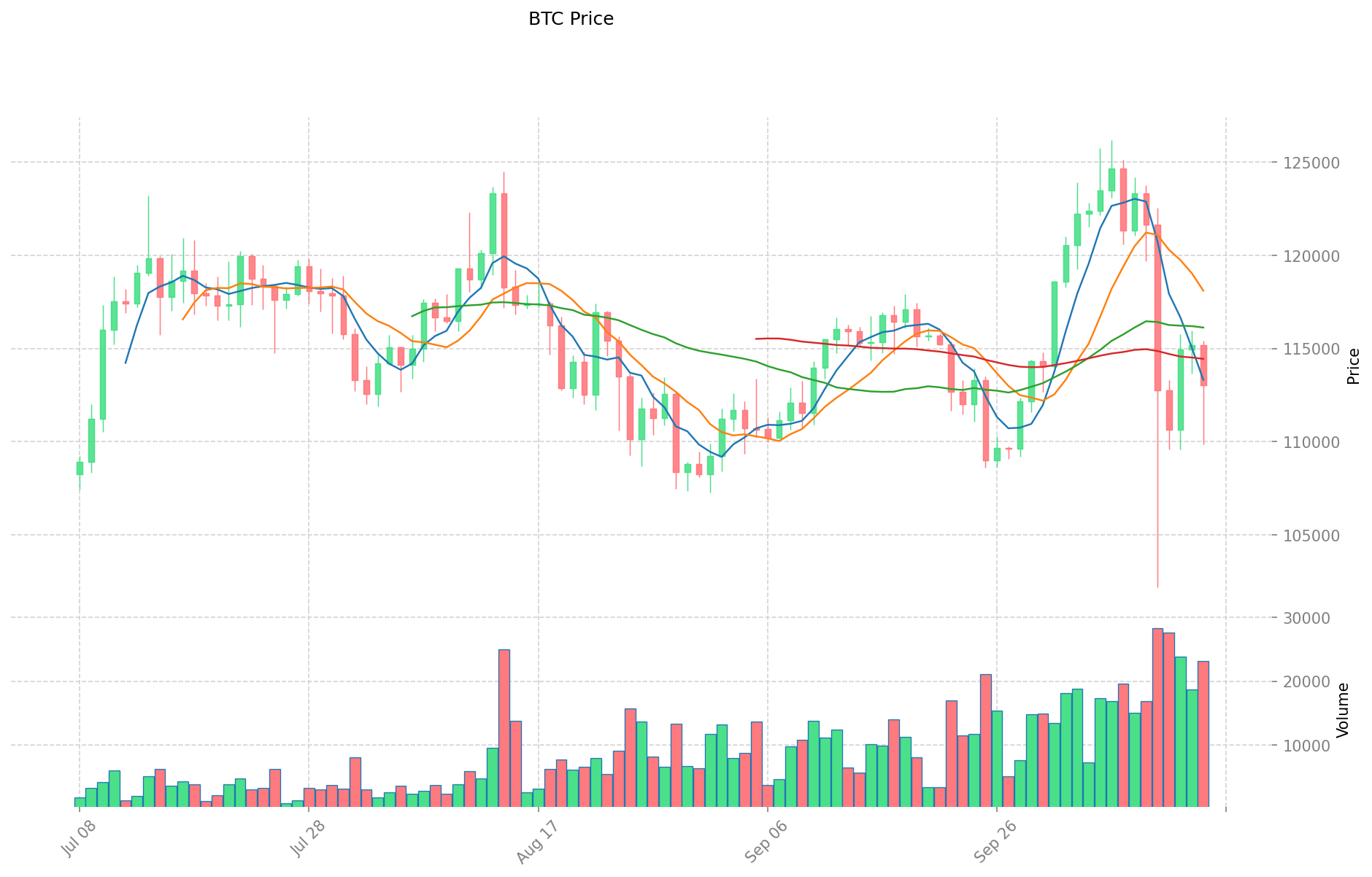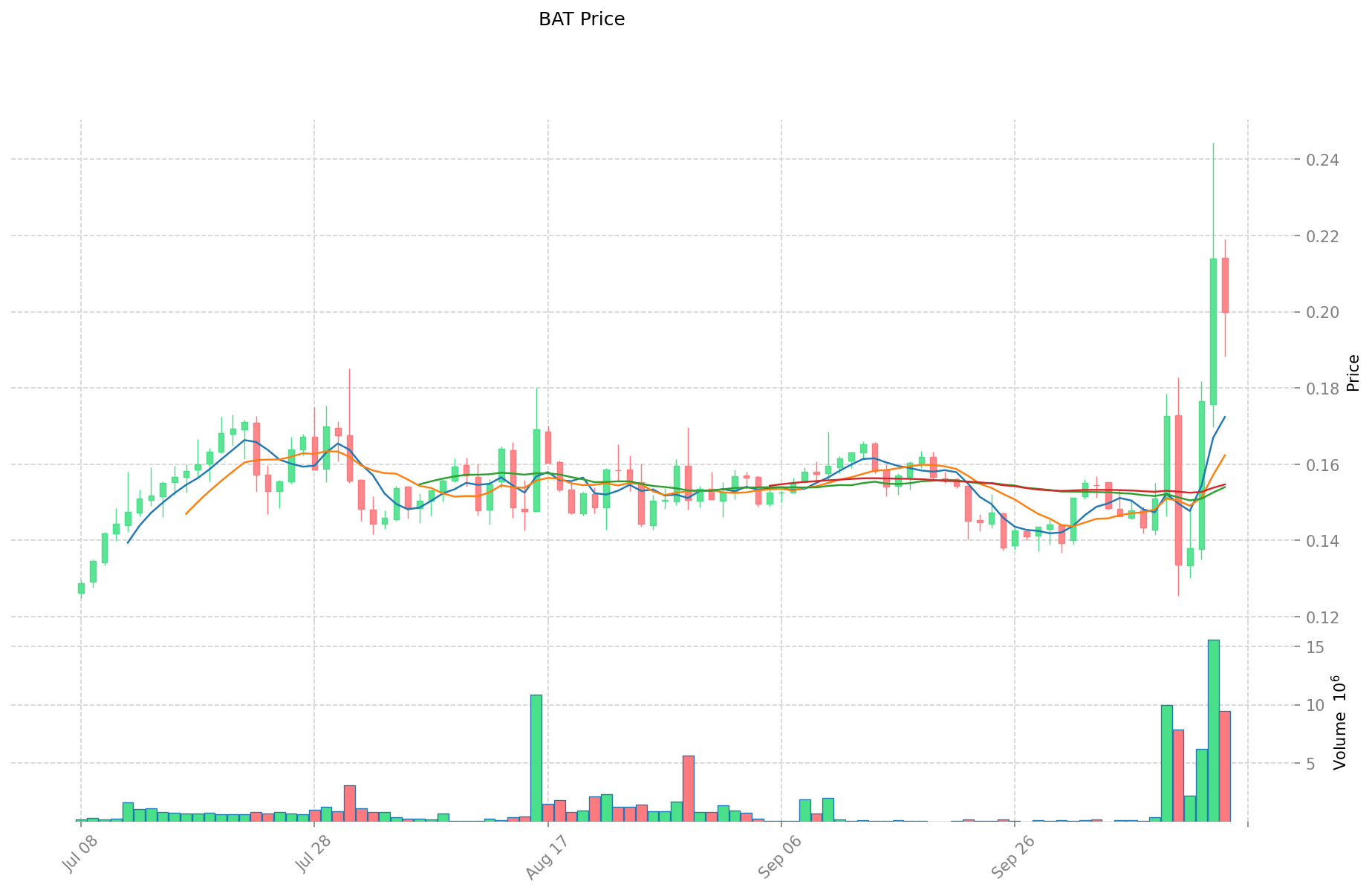BTC ve BAT: Kripto Para Ekosisteminde Dijital Varlıkların Rekabeti

Giriş: BTC ve BAT Yatırımlarının Karşılaştırılması
Kripto para piyasasında, Bitcoin ve Basic Attention Token karşılaştırması, yatırımcıların gündeminden hiç düşmeyen bir başlıktır. Bu iki varlık, piyasa değeri sıralaması, kullanım alanları ve fiyat performanslarında belirgin farklılıklar göstermenin yanı sıra, kripto varlık türlerinin konumlandırılması bakımından da ayrışır.
Basic Attention Token (BAT): 2017’de piyasaya sürüldüğünden beri dijital reklamcılığa ve kullanıcı dikkatine odaklanmasıyla piyasa tarafından kabul görmüştür.
Bitcoin (BTC): 2008’de ortaya çıkışından beri "dijital altın" olarak nitelendirilmekte olup, küresel işlem hacmi ve piyasa değeri en yüksek kripto para birimleri arasında yer almaktadır.
Bu makalede, BAT ve BTC’nin yatırım değeri karşılaştırması; tarihsel fiyat hareketleri, arz mekanizmaları, kurumsal benimseme, teknolojik ekosistemler ve gelecek öngörüleri üzerinden kapsamlı biçimde analiz edilecek, yatırımcıların en çok merak ettiği şu soruya yanıt aranacaktır:
"Şu anda hangisi daha cazip bir yatırım?"
I. Fiyat Geçmişi Karşılaştırması ve Güncel Piyasa Durumu
Bitcoin (BTC) ve Basic Attention Token (BAT) Fiyat Geçmişi
- 2021: BTC, kurumsal talebin artmasıyla 68.790 $ ile tüm zamanların en yüksek seviyesine ulaştı.
- 2021: BAT, Brave tarayıcı ekosisteminin büyümesinden güç alarak 1,90 $ ile zirve yaptı.
- Karşılaştırma: Son boğa döneminde BTC, Mart 2020’deki 3.850 $’dan Kasım 2021’de en yüksek seviyesine çıkarken, BAT de benzer bir yükseliş gösterdi ancak volatilitesi daha fazlaydı.
Güncel Piyasa Durumu (15 Ekim 2025)
- BTC güncel fiyatı: 112.474 $
- BAT güncel fiyatı: 0,1997 $
- 24 saatlik işlem hacmi: BTC 2.599.208.319 $ | BAT 1.958.058 $
- Piyasa Duyarlılık Endeksi (Korku & Açgözlülük Endeksi): 34 (Korku)
Anlık fiyatları görmek için tıklayın:
- BTC güncel fiyatı için Piyasa Fiyatı
- BAT güncel fiyatı için Piyasa Fiyatı


II. BTC ve BAT’in Yatırım Değerini Belirleyen Temel Faktörler
Arz Mekanizmaları (Tokenomik)
- Bitcoin: Toplam arzı 21 milyon ile sınırlı, her dört yılda bir gerçekleşen yarılanma ile kıtlık ve deflasyonist baskı oluşturuyor
- BAT: Toplam arzı 1,5 milyar token ile sınırlı, dış hesapların ilk yüzde 1’i toplam arzın %66’sını elinde bulunduruyor
- 📌 Tarihsel Örüntü: Bitcoin’in yarılanma döngüleri genellikle boğa piyasalarına öncülük ederken, BAT’in değeri daha çok Brave tarayıcı ve reklam ekosisteminin büyümesine bağlıdır.
Kurumsal Benimseme ve Piyasa Kullanımları
- Kurumsal Varlıklar: Bitcoin, ciddi kurumsal ilgi kazanmış olup, 2050 yılına kadar merkez bankalarının varlıklarının %2,5’inin BTC’de tutulabileceği öngörülüyor
- Kurumsal Kullanım: Bitcoin, uluslararası ticarette (sınır ötesi ödemelerde %10’a ulaşması bekleniyor) daha fazla kullanılırken, BAT esas olarak dijital reklamcılıkla sınırlı kalıyor
- Düzenleyici Yaklaşım: Bitcoin, farklı ülkelerde farklı düzenlemelerle karşılaşsa da ETF onaylarıyla meşruiyet kazanıyor; BAT ise ağırlıklı olarak mevcut reklam çerçevesinde faaliyet gösteriyor
Teknolojik Gelişim ve Ekosistem Genişlemesi
- Bitcoin Teknolojisi: Layer 2 çözümleri (sidechain ve birleşik madencilik gibi) ile gelişiyor; 73’ten fazla aktif proje, BTC L2 çözümleri üzerinde ve 3,6 milyar $ değerinde kilitli varlık mevcut
- BAT Teknolojisi: Brave tarayıcı ekosistemine entegre; gizlilik özellikleri, Brave Ads, Brave Talk, VPN ve Web3 cüzdan fonksiyonuyla dikkat çekiyor
- Ekosistem Karşılaştırması: Bitcoin’in ekosistemi BRC-20 token’lar ve Ordinals ile finansal uygulamalara doğru genişliyor, BAT ise dijital reklam modelinde dönüşüme odaklanıyor
Makroekonomik Etkenler ve Piyasa Döngüleri
- Enflasyon Yanıtı: Bitcoin, sabit arzı sayesinde “dijital altın” olarak güçlü bir enflasyon karşıtı pozisyona sahip
- Parasal Politika Etkisi: BTC fiyatı küresel para politikaları ve parasal genişlemeye tepki verirken, BAT daha çok dijital reklam piyasasındaki gelişmelere duyarlı
- Jeopolitik Faktörler: Bitcoin, artan jeopolitik gerilimler ve borç krizlerinde alternatif değer saklama aracı olarak öne çıkarken, BAT’in değeri büyük ölçüde bu gelişmelerden etkilenmez
III. 2025-2030 Fiyat Tahmini: BTC ve BAT
Kısa Vadeli Tahmin (2025)
- BTC: Muhafazakâr 106.731 - 112.349 $ | İyimser 112.349 - 160.659 $
- BAT: Muhafazakâr 0,105 - 0,198 $ | İyimser 0,198 - 0,214 $
Orta Vadeli Tahmin (2027)
- BTC yükselişe geçebilir, fiyat aralığı: 71.705 - 160.283 $
- BAT büyüme fazına girebilir, fiyat aralığı: 0,115 - 0,324 $
- Temel etkenler: Kurumsal girişler, ETF gelişmeleri, ekosistem büyümesi
Uzun Vadeli Tahmin (2030)
- BTC: Temel senaryo 131.828 - 193.866 $ | İyimser senaryo 193.866 - 219.068 $
- BAT: Temel senaryo 0,196 - 0,351 $ | İyimser senaryo 0,351 - 0,502 $
Yasal Uyarı: Bu bilgiler yalnızca eğitim amaçlıdır ve yatırım tavsiyesi değildir. Kripto para piyasaları yüksek volatiliteye ve öngörülemezliğe sahiptir. Yatırım kararlarından önce kendi araştırmanızı mutlaka yapınız.
BTC:
| Yıl | Tahmini En Yüksek Fiyat | Tahmini Ortalama Fiyat | Tahmini En Düşük Fiyat | Değişim (%) |
|---|---|---|---|---|
| 2025 | 160.659,213 | 112.349,1 | 106.731,645 | 0 |
| 2026 | 144.694,40589 | 136.504,1565 | 90.092,74329 | 21 |
| 2027 | 160.283,1805623 | 140.599,281195 | 71.705,63340945 | 25 |
| 2028 | 169.998,5908928745 | 150.441,23087865 | 96.282,387762336 | 33 |
| 2029 | 227.512,273457782395 | 160.219,91088576225 | 139.391,3224706131575 | 42 |
| 2030 | 219.068,684154102724425 | 193.866,0921717723225 | 131.828,9426768051793 | 72 |
BAT:
| Yıl | Tahmini En Yüksek Fiyat | Tahmini Ortalama Fiyat | Tahmini En Düşük Fiyat | Değişim (%) |
|---|---|---|---|---|
| 2025 | 0,21438 | 0,1985 | 0,105205 | 0 |
| 2026 | 0,237406 | 0,20644 | 0,1981824 | 3 |
| 2027 | 0,32400758 | 0,221923 | 0,11539996 | 11 |
| 2028 | 0,3630438357 | 0,27296529 | 0,1938053559 | 36 |
| 2029 | 0,3847855210485 | 0,31800456285 | 0,165362372682 | 59 |
| 2030 | 0,502494909987427 | 0,35139504194925 | 0,19678122349158 | 75 |
IV. Yatırım Stratejisi Karşılaştırması: BTC ve BAT
Uzun Vadeli ve Kısa Vadeli Yatırım Stratejileri
- BTC: Değer saklama, enflasyondan korunma ve kurumsal benimseme odaklı yatırımcılar için uygundur
- BAT: Dijital reklamcılık ekosistemine ve Web3 gelişimine odaklanan yatırımcılar için uygundur
Risk Yönetimi ve Varlık Dağılımı
- Temkinli yatırımcılar: BTC %70 — BAT %30
- Daha agresif yatırımcılar: BTC %60 — BAT %40
- Koruma araçları: Stablecoin dağılımı, opsiyonlar, çapraz döviz portföyü
V. Potansiyel Risk Karşılaştırması
Piyasa Riskleri
- BTC: Yüksek volatilite, makroekonomik etkilerden etkilenebilir
- BAT: Brave tarayıcı benimsemesine ve dijital reklam pazarındaki dalgalanmalara bağımlı
Teknik Riskler
- BTC: Ölçeklenebilirlik sorunları ve ağ tıkanıklığı
- BAT: Token dağılımında merkezileşme, ekosistem bağımlılığı
Düzenleyici Riskler
- Küresel düzenleyici politikalar her iki varlığı farklı şekilde etkiler, BTC büyük piyasa hacmi nedeniyle daha fazla denetime tabi tutulur
VI. Sonuç: Hangisi Daha Avantajlı?
📌 Yatırım Değeri Özeti:
- BTC avantajları: Güçlü kurumsal benimseme, yerleşik değer saklama fonksiyonu, deflasyonist mekanizma
- BAT avantajları: Yenilikçi dijital reklam modeli, Brave tarayıcıda büyüyen ekosistem
✅ Yatırım Önerileri:
- Yeni yatırımcılar: BTC ağırlıklı, çeşitlendirme için az miktarda BAT içeren portföy
- Deneyimli yatırımcılar: BTC’yi ana varlık olarak tutup, büyüme potansiyeli için BAT ekleyerek dengeli bir dağılım
- Kurumsal yatırımcılar: Yerleşik piyasa gücü ve düzenleyici gelişmeler nedeniyle BTC odaklı portföy
⚠️ Risk Uyarısı: Kripto para piyasaları yüksek oranda dalgalanma içerir. Bu makale yatırım tavsiyesi niteliğinde değildir. None
VII. Sıkça Sorulan Sorular
S1: Bitcoin (BTC) ve Basic Attention Token (BAT) yatırım potansiyelleri açısından başlıca farklar nelerdir? C: Bitcoin, değer saklama aracı ve enflasyondan korunma yolu olarak görülür, kurumsal benimsemesi yüksektir. BAT ise dijital reklamcılık ekosistemine odaklanır, Brave tarayıcının büyümesiyle ilişkilidir. BTC’nin toplam arzı 21 milyon coin ile, BAT’in ise 1,5 milyar token ile sınırlıdır.
S2: BTC ve BAT’in 2030 fiyat tahminleri nasıl karşılaştırılıyor? C: 2030 için BTC’nin temel senaryosu 131.828 - 193.866 $, iyimser senaryosu 193.866 - 219.068 $ aralığında. BAT’in temel senaryosu 0,196 - 0,351 $, iyimser senaryosu ise 0,351 - 0,502 $ aralığında.
S3: BTC ve BAT’in değerini belirleyen temel faktörler neler? C: BTC; kurumsal benimseme, yarılanma döngüleri ve makroekonomik faktörlerden etkilenir. BAT’in değeri ise Brave tarayıcı benimsemesi, dijital reklamcılık büyümesi ve ekosistem gelişimine bağlıdır.
S4: BTC ve BAT’in arz mekanizmaları nasıl farklılaşıyor? C: Bitcoin’in toplam arzı 21 milyon coin ile sabit olup, her dört yılda bir yarılanma gerçekleşir. BAT’in toplam arzı 1,5 milyar token ile sınırlı ve dış hesapların ilk %1’i toplam arzın %66’sını elinde tutuyor.
S5: BTC ve BAT yatırımlarında başlıca riskler neler? C: BTC’de yüksek volatilite, makroekonomik hassasiyet ve potansiyel düzenleyici kontroller; BAT’te ise Brave tarayıcıya ve dijital reklam piyasasındaki dalgalanmalara bağımlılık, token dağılımında merkezileşme riski öne çıkar.
S6: Kurumsal benimseme oranları BTC ve BAT’ta nasıl farklılaşıyor? C: Bitcoin, güçlü kurumsal destek alırken, 2050’ye kadar merkez bankası rezervlerinin %2,5’ine kadar BTC tutulabileceği öngörülüyor. BAT’in kurumsal benimsemesi ise esas olarak dijital reklamcılık sektörüyle sınırlı.
S7: BTC ve BAT için hangi yatırım stratejileri öneriliyor? C: Temkinli yatırımcılar için portföy dağılımı %70 BTC ve %30 BAT; agresif yatırımcılar için %60 BTC ve %40 BAT önerilir. Yeni yatırımcılar, BTC ağırlıklı, az miktarda BAT içeren çeşitlendirilmiş portföy düşünebilir.

Kripto Çöküşü mü Yoksa Sadece Düzeltme mi?

CryptoJack neden bu boğa koşusunda Gate.com ve GT TOKEN hakkında bu kadar umutlu?

OXT ve BTC: Dijital Varlıklar Açısından Orchid Protocol ile Bitcoin’in Karşılaştırmalı Analizi

REACT ve BTC: Teknoloji ile Kripto Para Piyasalarında Yatırım Stratejilerinin Kapsamlı Analizi

CSIX ve BTC: Dijital Varlıkların Performansı ile Benimsenme Eğilimlerinin Karşılaştırmalı Analizi

Mevcut volatilite dikkate alındığında, 2030 yılına kadar SUI fiyatı nasıl bir seyir izleyecek?

Dropee Günlük Kombinasyonu 12 Aralık 2025

Tomarket Günlük Kombinasyonu 12 Aralık 2025

SEI Airdrop Ödülleri’ne Katılım ve Talep Etme Kılavuzu

Kripto para birimlerinde algoritmik alım satım için etkili stratejiler

Stock-to-Flow Model ile Bitcoin'in Değerlemesini Anlamak





